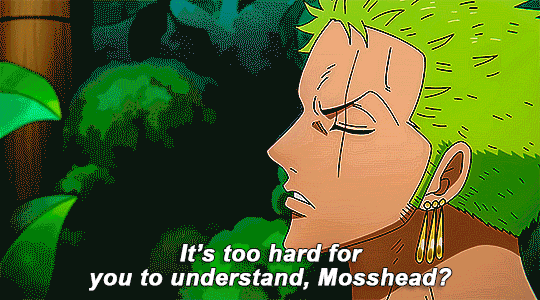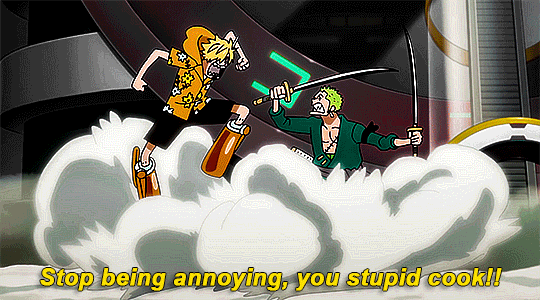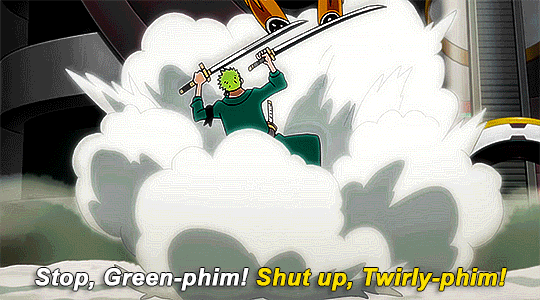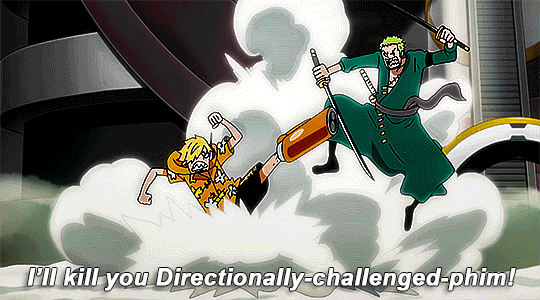#TOEI ANIMATION
Text
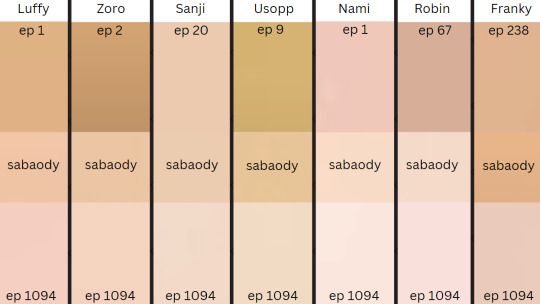
made a chart of the straw hats' skin tones with the colors being screencapped directly from the episodes, to show how much they've lightened.
this is more than just an "artstyle change" or "design evolution" or "just the timeskip" this is blatant racism/colorism. it's fucking ridiculous and i don't understand how toei is continuously getting away with it
please reblog btw, i think this is something people should see
#didnt include chopper/brook/jinbe for obvious reasons but i think even choppers fur has gotten lighter brown#even nami and sanji the characters who were pale from the beginning have gotten PALER#fucking INSANE how much usopp has lightened when you look at it side by side like this. and franky too which i never really took note of#and by “screencapped directly” i mean like i literally screenshotted the characters and zoomed way in#and cropped a square of their face/arm#and made sure it was in average outdoor lighting not mood lighting/dramatic lighting so this is as accurate as possible#one piece#usopp#luffy#franky#nico robin#nami#sanji#vinsmoke sanji#monkey d luffy#zoro#roronoa zoro#casey posts#toei animation#toei#straw hat crew#straw hats#one piece discourse
12K notes
·
View notes
Text
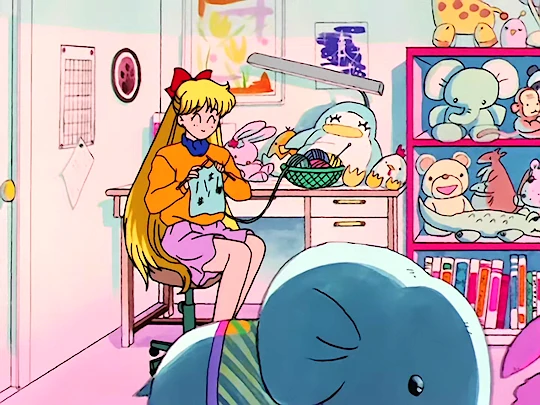
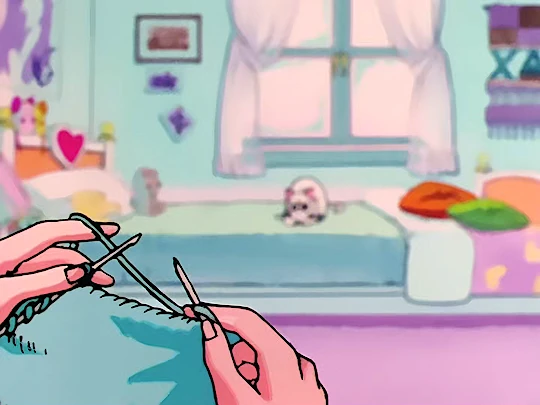
#sailor moon r#bishoujo senshi sailor moon#bssm#bssmgif#anigif#spicagif#aniknit#knitting#dailysailormoon#toei animation#aino minako#minako aino#artemis sailor moon#sailor venus#animangagirls#animangaladies#shoujoedit#fyshoujo#fyeahanimegifs#fyanimegifs#anisource#dailyanimatedgifs#animationsource#dailyanime#animegifs#animangahive
726 notes
·
View notes
Text






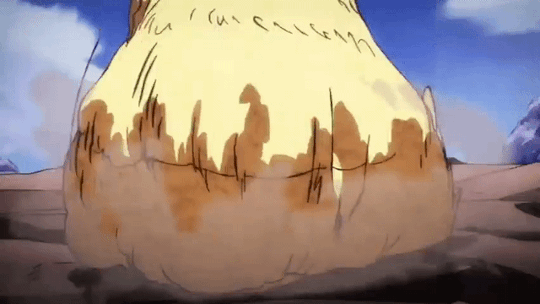

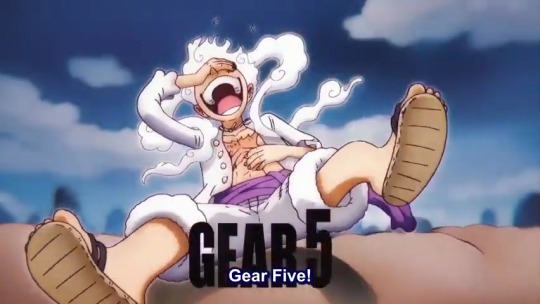

This was the Wacky, Looney Tunes, crazy anime battle ever!
3K notes
·
View notes
Text
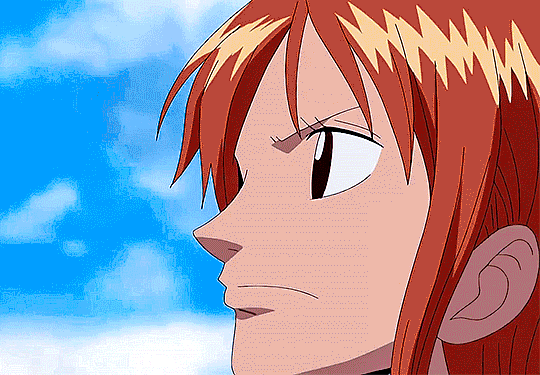




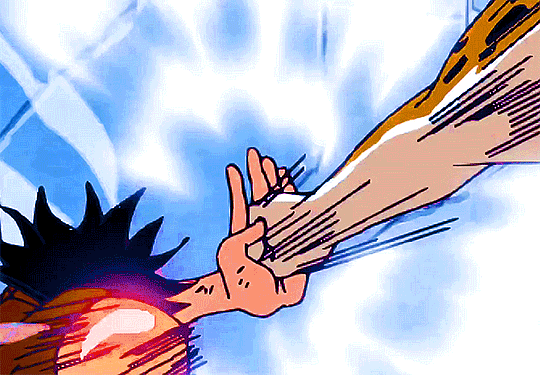
You morons can't challenge the entire world and expect to win!
Yeah? Bring it on!
MAKE ME CHOOSE — OP EDITION:
@sistersgrimm asked
→ enies lobby or arlong park
#one piece#nico robin#monkey d. luffy#roronoa zoro#cat burglar nami#black leg sanji#usopp#rob lucci#opgraphics#onepieceedit#animanga#enies lobby#animeedit#anime gifs#fyeahanimegifs#toei animation#mmcm#opgifs#by me
464 notes
·
View notes
Text

tbh i dont rly care for this doodle i did last night, but im going to share it anyway maybe yall will like it haha
#sailor moon#bishoujo senshi sailor moon#pretty guardian sailor moon#chibiusa tsukino#chibi chibi#sailor moon cosmos#anime#manga#shoujo#magical girls#pink aesthetic#naoko takeuchi#toei animation#artists on tumblr#small artist#doodle#doots
293 notes
·
View notes
Text

OFFICIAL ART FOR NAMI BIRTHDAY
Happy birthday Nami 🧡
283 notes
·
View notes
Text







HAKUJADEN (白蛇伝, 1958)
Toei Animation | dir. Taiji Yabushita
#mine#gifs#animanga#movies#filmedit#animationedit#dailyanime#anisource#anime#animeedit#fyanimegifs#dailyanimatedgifs#oldanimeedit#anime gifs#vintage anime#animation#animation gif#Panda and the Magic Serpent#Hakujaden#Toei Animation#Taiji Yabushita#白蛇伝
151 notes
·
View notes
Text


OMG WE ACTUALLY HAVE NEW EYECATCHERS!! ACTUAL NEW ONES!!!!! FOR THE FIRST TIME SINCE 2016!!!!
And look at the crew being all soft with each other 😭🥹
We SHOULD have gotten a filler of them just chilling either after the Raid or before Egghead
#one piece#toei animation#straw hat pirates#monkey d luffy#roronoa zoro#usopp#sanji#nami#tony tony chopper#nico robin#franky#brook#jinbei#i can't get TOO attached to their egghead outfits...
620 notes
·
View notes
Text

her transformation SCREAMED DRAMA, that curtain has forever changed me tbh
#art#digital art#fanart#anime#anime fanart#magical girl#magical girl fanart#prettycure#precure#prettycure fanart#cure lillian#cure lillian fanart#cure wonderful fanart#precure fandom#precure fanart#wonderful pretty cure#precure 20th anniversary#cure nyammy#toei prettycure#toei animation#toei company#toei precure#mayu nekoyashiki#yuki nekoyashiki
221 notes
·
View notes
Text

#one piece#one piece colorspread#illustration#digital illustration#digital art#artists on tumblr#anime art#luffy#mugiwara no luffy#straw hat luffy#egghead#toei animation#gear 5 luffy#gear 5
477 notes
·
View notes
Text





dragon ball • opening 1
275 notes
·
View notes
Text

Series: Kamikaze Kaitou Jeanne
Artist: Toei Animation
Product: Bandai Rubber Mascot Limited Edition Postcard - 10 x Gacha Bonus Gift (02/2024)
Source: Scanned from my personal collection
#kamikaze kaitou jeanne#phantom thief jeanne#神風怪盗ジャンヌ#toei animation#scan: hotwaterandmilk#merch#merchandise#90s anime#shoujo anime#magical girl anime#magical girls#mahou shoujo#mahoucore
358 notes
·
View notes
Text

1K notes
·
View notes
Text
The whole story of the illegal sale of Candy Candy products by Yumiko Igarashi

What is Candy Candy?
Candy Candy is shojo manga that was published between 1975 and 1981 in Nakayoshi magazine. It was written by Kyoko Mizuki (Keiko Nagita) and illustrated by Yumiko Igarashi. It was adapted to anime between 1976 and 1979 with a total of 115 episodes by Toei Animation.
The dramatic story of the sweet and optimistic Candy was an international success and is today an icon of shojo manga and one of the best sellers.
Evidently, the copyright holders are both Mizuki and Igarashi, and the trademark rights holder is Toei Animation.

Beginning of the conflict: Cancellation of the contract with Kodansha
According to Igarashi, her subsequent works at Kodansha didn't achieve significant sales, so the publisher abandoned her.
Candy Candy's views were decreasing over time and Kodansha did nothing. So Igarashi asked Mizuki to cancel her contract with Kodansha, Mizuki chose her friend and they did so on February 26, 1995.
Toei Animation also had a contract with Kodansha for Candy Candy, which automatically expired when Mizuki and Igarashi canceled their contract. To broadcast Candy Candy, Toei Animation had to sign a new contract with Igarashi and Mizuki. Toei Animation and Mizuki tried to contact Igarashi many times for this but were unsuccessful.
Meanwhile, Igarashi was working with Fuji Sankei (now Qualus), through which she was able to offer licenses to many companies to sell Candy Candy products without asking permission from Mizuki or Toei.
The unmasking: Banpresto's purikura
One of these companies was Banpresto Co., Ltd., which develops video games and makes collectible figures. Igarashi lied about creating a new (fictitious) company in Hong Kong with Mizuki and Toei called "Candy Corporation." Igarashi and Banpresto made a "purikura" (Japanese photo booths) contract. Banpresto asked Igarashi many times if Mizuki was aware of this contract, Igarashi always confirmed it. Banpresto considered it rude to ask Mizuki herself to confirm, so they agreed.
So how did they find out what Igarashi was doing? Candy Candy's purikura was set up at the Tokyo Gulliver Store in Matsudo, Chiba Prefecture, which was a large gaming center managed by Banpresto.
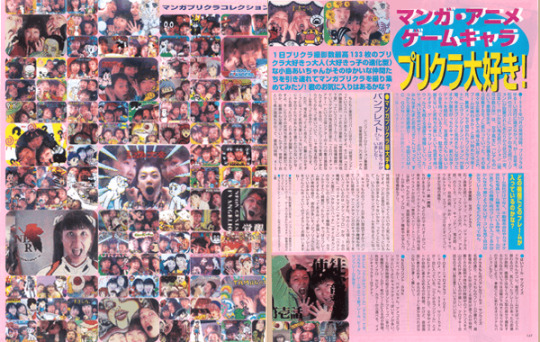
Banpresto intended to install its purikura machines throughout the country, including Candy Candy.
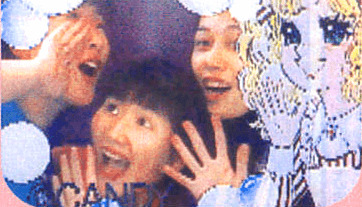
Igarashi stated that she accepted the purikura because it was only "a test case" and that she would have no compensation. She said that she was worried that Mizuki would reject the offer because Mizuki didn't like games at all (which Mizuki never said), so she planned to talk to Mizuki later if the test was successful. News of Candy Candy's purikura spread through the media and reached Mizuki in May 1997. Igarashi says that Mizuki told her over the phone that if she had known she wouldn't have refused, and that Igarashi was trying to keep the profits for herself. She said that Mizuki forced her to cancel the purikura event and that she hired a lawyer to sue Igarashi. Mizuki refuted this on her official website. Igarashi stated that she didn't receive any benefit from the purikura because it was only a prototype. Even if it were, purikura isn't free, so benefits were generated.
The problem is that the idea of creating a purikura was Igarashi's, not Banpresto's. Banpresto, upon realizing that they hadn't received permission from Mizuki, removed the purikura and wouldn't move it until the copyright issue was resolved. That's why Mizuki didn't sue Banpresto. Still, Banpresto apologized profusely for being involved in the scam.
Mizuki comments that she wasn't sure about canceling the contract with Kodansha, her husband didn't recommend it, but she still did it and regrets it. Her husband asked the legal advisor who had drawn up the contract, the legal advisor didn't know. Worried, Mizuki and her husband wanted to talk to Igarashi to discuss what they would do with Candy Candy from then on, but Igarashi kept putting off her request, saying that she was busy and for her to wait until the next month, and so on.
Mizuki became suspicious and finally they found out about the purikura issue, they even went to Banpresto to ask for explanations, to which Banpresto responded that they received the copyright to do it from the (fictitious) company that Igarashi created without Mizuki or Toei. They also told her how Igarashi confirmed to them several times that she had Mizuki's permission. Although purikura was considered a test, they received benefits for it.
As a result of this, everything that Igarashi had been doing in Hong Kong was discovered: she published manga products without authorization through Jade Dynasty Publishing. When this publisher found out that they didn't have Mizuki's permission either, they canceled the contract with Candy Corporation.
So far it was discovered what Igarashi had been doing without Mizuki's permission:
Original reproductions by Fuji Sankei and others.
Candy Candy reprint by Fusosha Publishing.
Fuji Sankei CD-ROM.
Postcards and cards manufactured by Jade Dynasty Publishing.
The Banpresto purikura.
Legal CD-ROM Manga.

Illegal CD-ROM Manga.
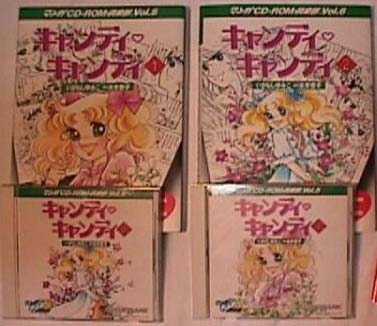
To all this, Igarashi insisted that 80% of Candy Candy belongs to her, and that only 20% belongs to Mizuki.
The case of fake original illustrations
In August 1997, the sale of original illustrations (again, without Mizuki's permission) was announced in the Sankei Shimbun. Finally, in September 1997, Fuji Sankei was sued for its lack of sincerity. These illustrations were actually prints made by a printer, they went on sale in February 1998 as a high quality print, but people in the art world warned that it wasn't a high quality print. That is, they were selling reprints at a high price as if they were high quality but they weren't.
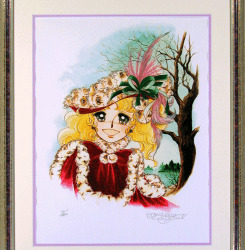
An expert commented that these fakes have a real value of 30 to 200 yen ($0.19-1.27). If they were originals, it would be between 8,000 and 20,000 yen ($50.73-126.84) (and framed); but Igarashi and Fuji Sankei sold them for between 40,000 and 140,000 yen ($253.67-887.85). The deceived fans were deeply hurt, if they had known that they were buying it without Mizuki's permission and at a higher price than the real one, they wouldn't have bought it.

Mail order advertisements in newspapers ceased, but they were still distributed and sold in art galleries, for example Atelier Beauty and Prince Gallery.
The problem of selling products without the Mizuki's name
A friend of Igarashi spread the false rumor that Mizuki sued Igarashi without talking to her first. In fact, the decision to report a friend of 20 years wasn't easy for Mizuki, but she had to do it AFTER talking to her. But she and Fuji Sankei refused to have a conversation with her about what happened. Several people told Mizuki to be careful with Igarashi, but Mizuki always defended her.
In the indication © on products, the names of all copyright holders must be added and never omitted without their consent. In the following images you can see which are the official products and which are the Igarashi products.
In this bag we see that the three names are included, it is original.
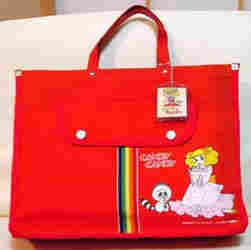
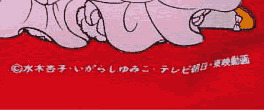
This backpack is also an official product, it contains the names of Mizuki and Igarashi.
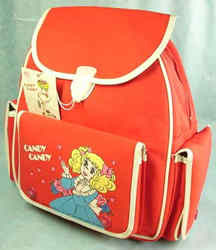
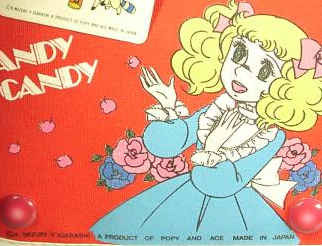
Let's now look at the illegal merchandise. In this product we can see only the Igarashi's name.


This other one used Mizuki's name without her permission.
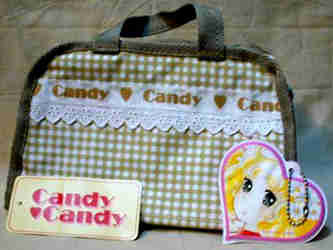
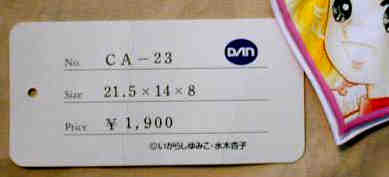
The impossible broadcast of Candy Candy
In 2001 all broadcasting rights granted to foreign companies expired. So the later copies are pirated copies disguised as official products. This was done, for example, by Power International Multimedia Inc., Igarashi's business partner in Taiwan. Even after Igarashi lost her lawsuit in 2008, Power International released this DVD box set unlicensed from Toei Animation.
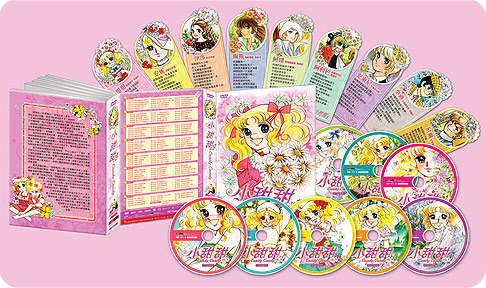
When it was discovered what Igarashi had been doing, Toei and Mizuko planned to resolve the situation by ratifying the illegal goods (confirming the counterfeit products and rebirthing them as an official product) if the Igarashi side appealed and didn't fight further after the court's ruling, with the intention to help scammed companies. But the matter reached the Supreme Court. The products spread so much around the world that nothing could be done about it.
On August 23, 1999, Mizuki and Toei signed an agreement stating that Toei Animation could register "Candy Candy" as a trademark so that it can broadcast the anime.
Currently, Toei Animation is wary of digitally remastering all 115 episodes (which would cost a considerable amount of money) only to have it eventually canceled due to the ongoing copyright dispute.
Mizuki allowed the anime to be broadcast. But there are many factors why it cannot be broadcast, even abroad:
The contract with Toei Animation hasn't been renewed.
The copyright dispute.
The problem of infringement of trademark rights by Igarashi.
Igarashi sent Toei Animation to court to invalidate its trademark on July 10, 2001, but this was dismissed.
Igarashi filed a lawsuit against Mizuki requesting consent to remake it.
In short, if both creators don't recognize the copyright and give their consent, the anime cannot be broadcast. But Igarashi didn't want to, she even wanted the trademark rights for herself, but Mizuki didn't allow it. Anyway, it's not fair because the anime version is also the work of Toei staff and voice actors. Igarashi gave Toei permission to rebroadcast it, but without acknowledging Mizuki's copyright, it became a vicious cycle.
Japan Manga Society against Kyoko Mizuki
Igarashi has publicly stated on many sites that Kyoko Mizuki isn't the original author. This is quite questionable because the story was written by Mizuki, Igarashi drew it. The Japan Manga Society doesn't offer Mizuki's presence and instead allows Igarashi to present convenient arguments and dismiss the Supreme Court's ruling. The Copyright Subcommittee of the Japan Manga Society declared that Mizuki's blocking the sale of products produced by Igarashi without permission from Mizuki and Toei was an abuse of rights without justifiable reason, even suggesting that Igarashi file a lawsuit against Mizuki.
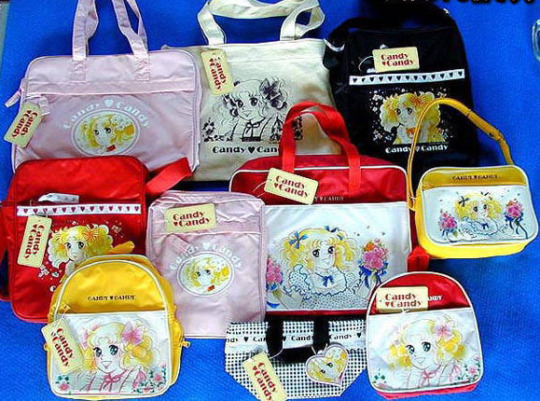
During and after losing the case, Igarashi continued her illegal business saying that she had reached a deal with Mizuki (a lie).
Yumiko Igarashi on trial
Kodansha itself attempted to persuade Igarashi to apologize and reconcile with Mizuki by submitting a total of 3 statements to the district court in 1998 by Mitsuro Shimizu, the editor in charge of Candy Candy at Kodansha. Still, Japan Manga Society said Kodansha didn't testify. Mitsuro Shimizu explained that the editorial department selected Mizuki as the original author, the concept of Candy was discussed between Igarashi, Mizuki and Shimizu. Igarashi expressed her wishes and opinions but in the end it was Mizuki who made the final decision as the writer. Kunio Hase, the director of the Japan Manga Society said that these statements were false. Yukio Shindo, director of copyright business promotion at Kodansha, stated in court in October 1998 that manga works written from the original work are always subject to the original copyright of the original author, which to use a work for secondary use, permission must be obtained from the original author and the manga artist whatever it may be (even if they're illustrations) and that Kodansha always considered Kyoko Mizuko as the original author during the 20-year contract. The Japan Manga Society said that the Supreme Court's decision to position Mizuki as the original author is an absurd ruling that doesn't reflect the real situation of the manga industry. Kodansha has always maintained with legal opinions that Kyoko Mizuki is the original author and the manga work is a derivative, the work of the original manuscript. Yumiko Igarashi commented that the Supreme Court ruling naming Mizuko as the original author was unfair and doesn't accept that the person who wrote "just the words" has the copyright. In this situation, neither Kodansha can reprint the manga, nor can Toei broadcast the anime.
List of court cases related to “Candy Candy”
February 25, 1999: "Candy Candy" Case (Fuji Sankei)
Mizuki denounces the sale without her permission of false "high quality" illustrations by Igarashi and Fuji Kasei. The court recognized Mizuki as the owner of the copyright and ordered Igarashi to stop publication. Characters can't be used without Mizuki's permission. In November 1995 they signed a contract that established that their consent was required for the use of the characters, but Igarashi breached it.
April 8, 1999: "Candy Candy" Incident (Yumiko Igarashi Museum)
Mizuki denounces that products with Candy Candy's image continue to be sold without her permission, even after winning the first trial. The Yumiko Igarashi Museum had been conducting mail-order sales of Candy Candy products on the official Yumiko Igarashi website.
March 17, 2000: Candy Candy Illustration Sales Case (Shizuka Art)
Mizuki sues Shizuka Art for selling Candy Candy's image without her permission. An interim injunction was granted against Shizuka Art to prohibit sales. Shizuka Art was exhibiting and selling new paintings by Yumiko Igarashi as original paintings.
March 30, 2000: "Candy Candy" Case (Fuji Sankei)
The judge noted that in manga, the illustrations and the development of the story are inseparable and integral. You can't sell the illustrations.
May 25, 2000: "Candy Candy" Case (Kabaya Foods)
Between 1998 and 1999, Kabaya Foods, with only Igarashi's consent, manufactured and sold candy bags featuring the Candy Candy characters. The judge stated that the original author can exercise copyright even if only images are used. The Tokyo District Court ordered the defendant to pay approximately 3 million yen ($19,029.75).
October 17, 2000: Candy Candy Paintings Sales Case (Shizuka Art)
The "Hello Candy Candy" exhibition displayed and sold paintings of Candy Candy, again without Mizuki's consent.
December 26, 2000: Candy Candy Commercialization Case
Mizuki demands Fuji Sankei and Yumiko Igarashi.
March 2001: Japanese anime remake test
Igarashi filed a lawsuit against Mizuki demanding a remake of Candy Candy with Nippon Animation.
August 7-September 28, 2001: Toei trademark invalidation trial
Igarashi filed a trademark invalidation suit against Toei Animation on July 10 but it was dismissed because in 1999 Mizuki and Toei signed an agreement establishing that Toei Animation would register Candy Candy as a trademark.
October 25, 2001: "Candy Candy" Case (Fuji Sankei)
For the third time, the judge explains to her that copyright can't be enforced without the consent of the original author and the manga artist. They granted the copyright to the original author, Mizuki.
February 23, 2002: "Candy Candy" Incident (Lucky Corporation, Osaka)
Lucky Corporation sues Igarashi because it suffered damages of approximately 45 million yen ($285,446.25) from the manufacture and sale of "Candy Candy" products, a right granted by Igarashi but not by Mizuki. Igarashi paid about 10 million yen ($63,432.50) and a settlement fee.
April 2002: Otaru Art Museum Exhibition Test
Yumiko sued Mizuki over the exhibition at the Otaru Art Museum.
May 30, 2002: Candy Candy Clothing Sale (Tanii, Dan Enterprises, Sunbright, Earth Project)
Mizuki sues several clothing sales companies for commercializing Candy Candy characters without permission. The damage claim was for 55 million yen ($348,878.75), but the Tokyo District Court ordered her to pay approximately 29 million yen ($183,954.25).
September 10, 2003: "Candy Candy" merchandise breach of contract case
Toymaker Apple One made Candy Candy puzzles, again, only with Igarashi's permission, not Mizuki's. So they sued Igarashi and other companies that claimed to own the copyrights they granted them to make the puzzles.
July 21, 2004: "Candy Candy" merchandise breach of contract case
The Tokyo District Court of First Instance sentenced Igarashi to pay approximately 1.75 million yen ($11,100.69).
September 2005: Kurashiki Art Museum Exhibition Test
Mizuki against the Kurashiki Art Museum, which held an exhibition of Candy Candy with only the permission of Igarashi, who said "I don't need permission to show it."
甜甜 Lady Lady: The Taiwanese Candy
You may have ever used an image mistakenly thinking it was Candy. That's because Igarashi created a "new original work" called "Lady Lady" in Taiwan that curiously resembles "Candy Candy" (the difference is in the bangs and that she doesn't have freckles). The other two characters also look like Anthony and Terry.

In this way, Igarashi challenges Toei Animation by infringing (again) Toei's trademark rights. As if that were not enough, "Lady Lady" is the title of the animated version of "Lady!!" by Yoko Hide and trademark of Toei Animation. Also, Candy Candy's title in Chinese is "小甜甜" (Xiǎo tián tián), literally "Little Candy Candy". I mean, it's a shameless mix between Candy Candy and Lady Lady. 甜甜 is the Chinese name of Yumiko Igarashi's Lady Lady.

Current situation
Since as of today they have not reached an agreement, the anime cannot be broadcast nor the manga can be published either in Japan or abroad. The authors continued with their professional careers. Igarashi can't create or sell any products related to Candy Candy, something Mizuki can do, without using Igarashi's illustrations.
To date, Igarashi has't expressed any apology to Mizuki or Toei Animation. In fact, she is suspected of still producing illegal goods on the foreign market. Mizuki feels sad, not only because of everything that happened, but also because of the malicious mentality that Igarashi had about her, thinking that she was her friend.
Please, be careful with the products you buy of Candy Candy, try to make sure they're original and not illegal products. Do not contribute to Igarashi's illegal business.

Sources:
#candy candy#yumiko igarashi#toei animation#anime#manga#shojo#shoujo#shoujo anime#shoujo manga#shojo anime#shojo manga#old shojo#old shoujo#kyoko mizuki
174 notes
·
View notes

